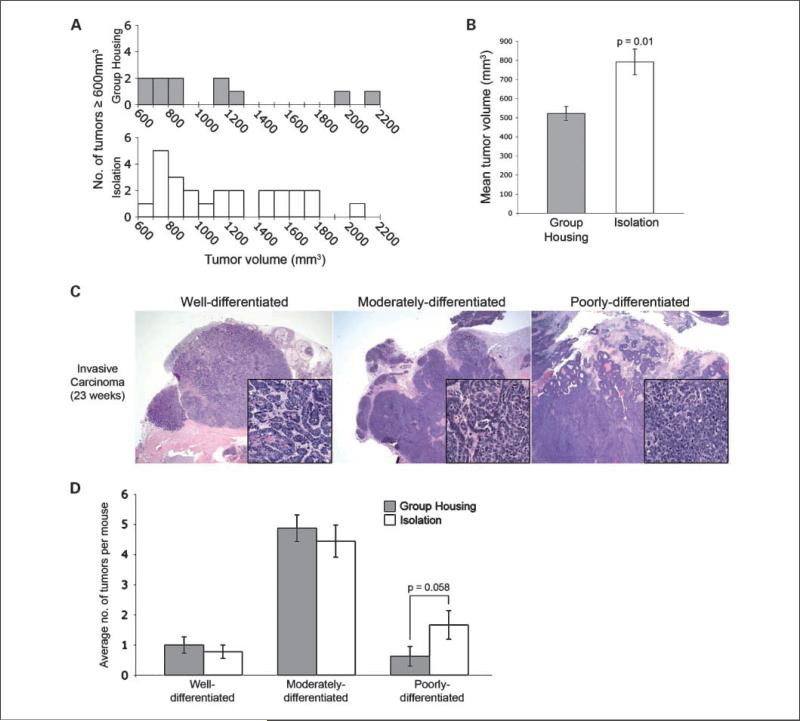Fig. 3.
Socially isolated SV40 Tag mice develop significantly larger mammary gland tumors. A, the distribution of tumor volumes ≥600 mm3 from grouped (gray columns) versus isolated (white columns) mice. B, isolated mice had overall significantly larger mean tumor volume at 21 wk of age. Mean tumor volume represents the least-square means as determined using the mixed-effects ANOVA model (*, P = 0.01 based on mixed-effects ANOVA). C, representative examples of poorly, moderately, and well-differentiated mammary carcinomas from 23-wk-old transgenic mice (H&E, 12.5×, inset 400×). D, isolated animals exhibit a trend toward a higher number of poorly differentiated tumors per mouse (Error bars = SEM, P = 0.058 based on Poisson regression).

